Updated: 14-Apr-2022
Rheinmetall Borsig was a manufacturer of solid fuel rockets for both weapons and aircraft.
-The company began to manufacture rockets in 1942 and its first engineer was Hermann Vüllers.
-The pioneer missile "Feuerlilie" F-25 was powered by the 109-505 engine with 500 Kgf thrust and the F-55 had the 109-515 engine with 4,000 Kgf thrust. Both engines ran on dyglycol (solid).
-They were not operational and only firing tests were carried out. They were Land-Air missiles.
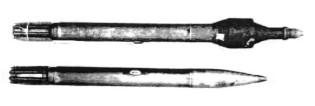
“Two R4Ms”
-The small air-to-air rockets did proliferate, especially the R4Ms that were launched in volleys of 24 from the Me-262 against the American B-17.
-They were shot out of cylindrical containers, usually fitted under the wing, in which the eight stabilizer fins were kept folded. These fins opened on the way out.
-These rocket clusters were hard to keep stable, so they were sent in groups.

“R4M with open fins. Cutaway”
-The other air-to-air missile used was the 15 cm variant of the R4M which was called “Orkan”.
-They were mounted on many fighters under the wings, that is why the container tube has the proper brackets.
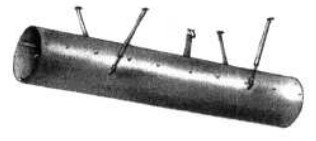

“Orkan, without fins”
-We move on to solid rocket booster motors used in WWII to lift overloaded aircraft or large gliders like the Gotha 242-A1.
-They were installed on the tail or under the fuselage.

“Four Rheinmetall-Borsig RI-502 engines”
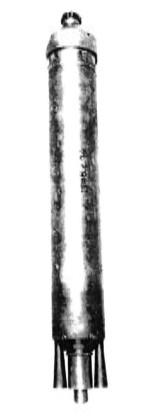
“An RI-502 engine”
-This installation was alternated with the liquid fuel Walter RI-202b engines.
-The RI-502 (109-502) ran on solid fuel. Its thrust was almost 500 Kgf but the duration was only about six seconds. It weighed 48 Kg and its measurements were 127 cm in length by 17.8 in diameter.
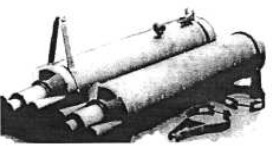
“RI-502 for the Me-262”
-The Me-262 aircraft used to use them as a take-off aid in the Me-262V8 version.
-They were placed under the fuselage and in the illustration it is shown with the mounting flanges. After take-off they could be dropped and recovered to recharge them again.
-They could be used to launch missiles as "boosters".
-There were more rockets like the R-100BS that was similar to the Orkan but with fins about which we do not have more information.
-The Fuerlilie F-55 used the RI-503 in a four-unit assembly as shown in the photo below.
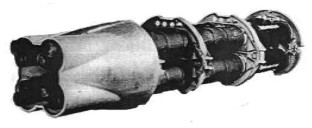
“RI-503”
-The Rheinmetall-Borsig solid rockets were also mounted on the Rheintochter R1 and R3 with 7,500 Kgf of thrust on the R1.
-The R3 could carry the Rheinmetall-Borsig engines of 14,000 Kgf of thrust and those of 16,000 Kgf.
Engines of RHEINMETALL - BORSIG
Model: 109-502
Arquitecture:
Chambers:
Fuels:
Feed System:
Ignition:
Thrust:
Weight:
Model: 109-505
Arquitecture:
Chambers:
Fuels:
Feed System:
Ignition:
Thrust:
Weight:
Model: 109-515
Arquitecture:
Chambers:
Fuels:
Feed System:
Ignition:
Thrust:
Weight:
Model: 1st stage Rheintochter
Arquitecture:
Chambers:
Fuels:
Feed System:
Ignition:
Thrust:
Weight:
Model: 2nd stage Rheintochter
Arquitecture:
Chambers:
Fuels:
Feed System:
Ignition:
Thrust:
Weight:
Model: 3rd stage Rheintochter
Arquitecture:
Chambers:
Fuels:
Feed System:
Ignition:
Thrust:
Weight:
Model: RI-202b
Arquitecture:
Chambers:
Fuels:
Feed System:
Ignition:
Thrust:
Weight:
Model: RI-502 (109-502)
Arquitecture:
Chambers:
Fuels:
Feed System:
Ignition:
Thrust:
Weight:
Model: RI-503
Arquitecture:
Chambers:
Fuels:
Feed System:
Ignition:
Thrust:
Weight:


